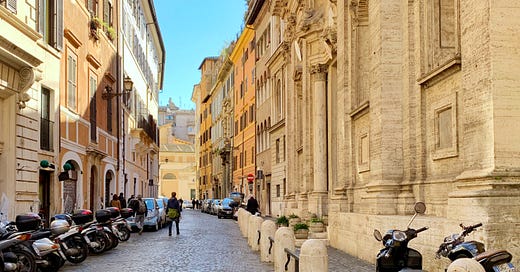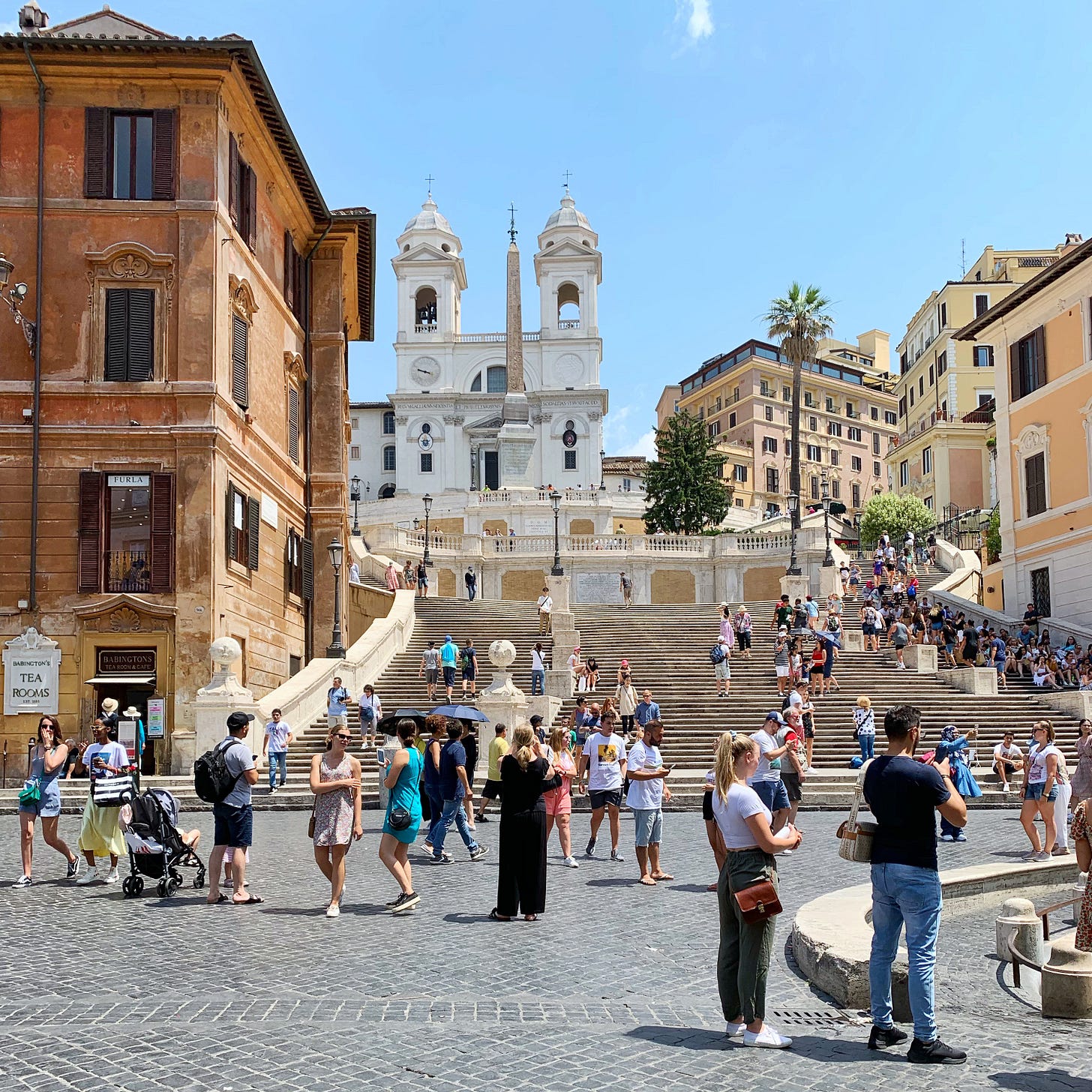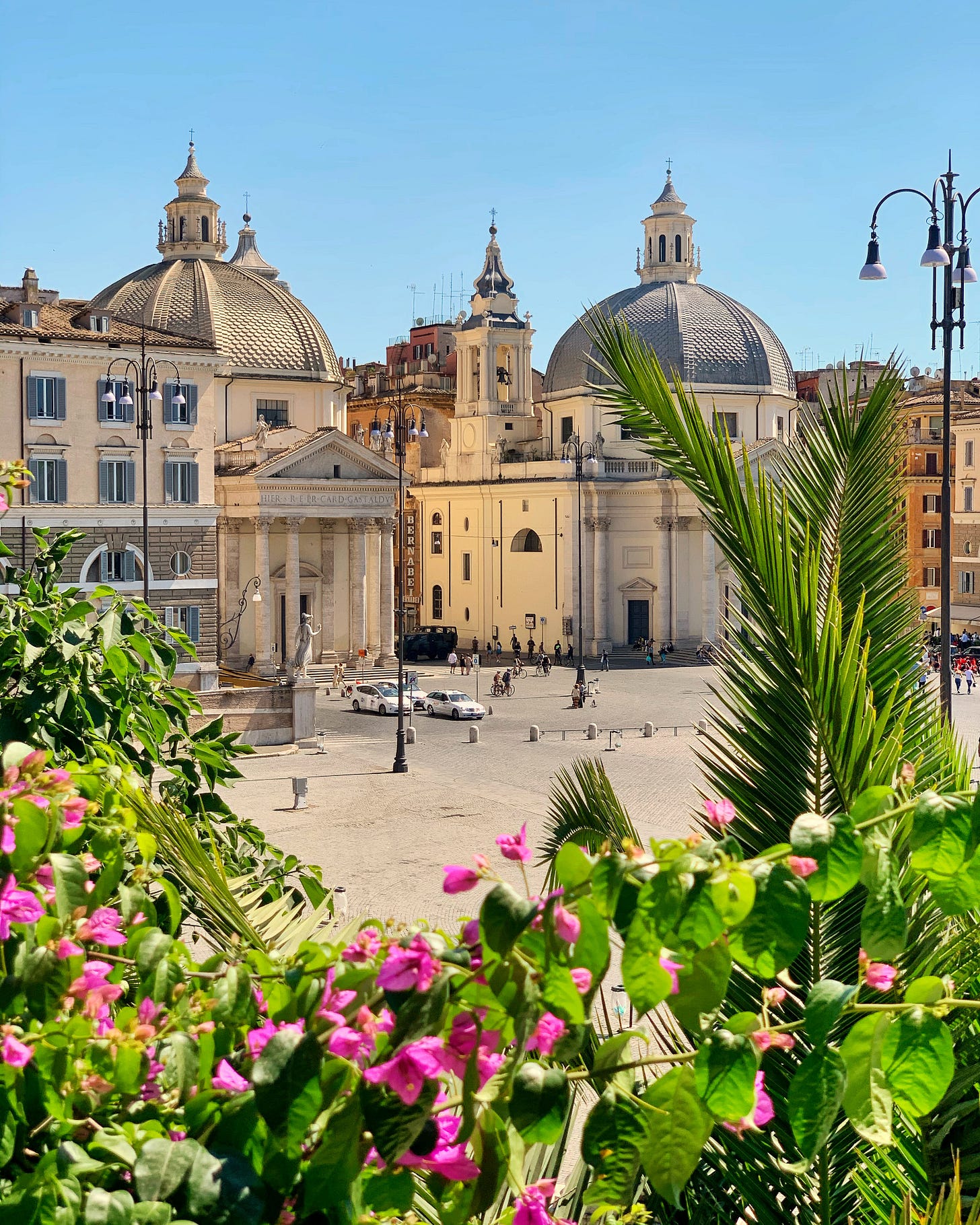One of the questions I get asked most frequently is what are the best neighborhoods to base oneself during a trip to Rome. I’ve written a bit about this topic for mainstream publications, but here I want to delve deeper into the nuances, cover some of the city’s micro-neighborhoods, and feature some of the more off-the-beaten path quartieri that don’t necessarily get featured in guidebooks or magazines but are still worth exploring.
One of the first things I feel the need to address is the fact that even I get confused sometimes about what to call a particular neighborhood because there are official and unofficial names that get tossed around. “The Romans divided the districts into 14 rioni, which Augustus called regiones,” according to Elisa Valeria Bove, an archeologist and CEO of Roma Experience. “Obviously, there are differences between the ancient and modern districts, which aren’t the same anymore, but some traces remain.”
In the 18th century, Pope Benedict XIV reorganized the city into 14 rioni whose names are marked with marble plaques on buildings around the city. Some of these names have stuck, such as Monti, Trastevere, Esquilino, Testaccio, and Prati, while others—Parione, Pigna, Ludovisi, and Sallustiano, for example—have fallen by the wayside. Others, like Campo Marzio and Trevi, are sometimes used, though those neighborhoods often get lumped into the general centro storico (i.e. historic center).
Generally speaking, most of the main monuments and attractions are located in the centro storico and the other neighborhoods within the Aurelian Walls built by the Emperor Aurelian during the 3rd century to protect the city from invasions. The modern city extends far beyond the Aurelian Walls, even beyond the Grande Raccordo Annulare (i.e. the ring road that circles the city). And as is true in many cities, the farther out you go, the less touristy and less expensive the area will be. So without further ado, here’s a breakdown of Rome’s 13 essential neighborhoods and what to do in them.
Centro Storico
When my friends and I talk about meeting up in centro, it’s sort of a vague and nebulous term for the city center, which stretches more or less from Piazza Navona to the Colosseum. But to be more precise, I’ll borrow the delineation used by Fodor’s Rome guidebook, which posits that the centro storico covers the core area around Piazza Navona, the Pantheon, Campo de’ Fiori, and the Jewish Ghetto.
If you want to be able to wake up in the morning and stroll right over to these monuments, this is the place to stay. Just be warned that as soon as you walk out the door of your hotel or Airbnb, you’ll be surrounded by tourists.
Campo Marzio
Literally translated as the Field of Mars, Campo Marzio covers the area that extends from Piazza del Popolo south to Piazza di San Lorenzo in Lucina and from the Tiber River east to the Spanish Steps and Trinità dei Monti. It includes the area sometimes referred to as Tridente, so-called because Via di Ripetta, Via del Corso, and Via del Babuino form the shape of a trident.
This is where you’ll find the city’s most important thoroughfare, Via del Corso, as well as famous shopping streets like Via dei Condotti, which is lined with designer boutiques. There are many swanky five-star hotels concentrated in this area. Some of my favorites are the intimate Hotel Vilòn and Hotel de la Ville atop the Spanish Steps.
Flaminio
Piazza del Popolo marks the southern end of the Flaminio neighborhood, which extends north toward the MAXXI (the museum of 21st century art) designed by Zaha Hadid and the Auditorium Parco della Musica designed by Renzo Piano. It becomes increasingly residential the farther north you go.
Some of the city’s best luxury hotels are on and around Piazza del Popolo, including Hotel de Russie (where my husband Marco works) and Hotel Locarno, an Art Deco gem from the 1920s where Wes Anderson likes to stay when he comes to Rome. Another good reason to visit: a meal at the Michelin-starred Ristorante All’Oro, which in my opinion has the best fine dining tasting menus in the city.
Keep reading with a 7-day free trial
Subscribe to The New Roman Times to keep reading this post and get 7 days of free access to the full post archives.








